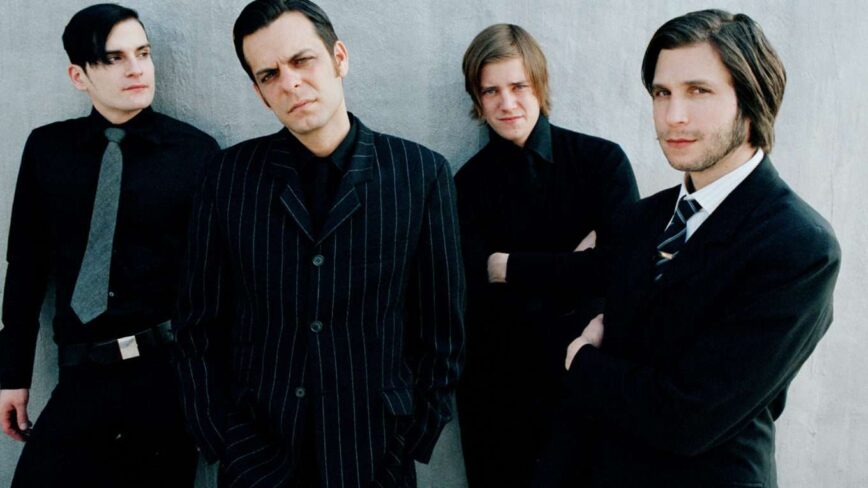While I was technically alive for the eras of music I’m writing about here, I missed out on pretty much all of it in real time and have been discovering it like an anthropologist. So here’s a look at one record that I was able to get on board with as it happened, even if I ignored a lot of the scene it was a part of until some years after the fact (that would be the early ’00s NYC garage/indie rock movement because I was just a dumb contrarian at the time).
That would be the decade/century/era’s post-punk revival standard bearer, Interpol, and their 2002 debut Turn On The Bright Lights. It stood out to me not because of their Joy Division-isms – at the time, I had only a cursory acquaintance with the genre forbears – but because the guitar interplay of Paul Banks and Daniel Kessler sounded so much like Reg Smithies and Dave Fielding of The Chameleons, who I was fairly obsessed with at the time (and to be fair, still am). As such, I was in the house for their Toronto debut at The Horseshoe in September 2002 – which was excellent – as well as their return a year later at the Kool Haus, which was not nearly as good as the band sounded and looked just worn out.
And that’s not why I fell off with the band, though it didn’t help. I actually don’t know if I know why. I know I felt like Antics lacked the same atmosphere and foreboding of the debut, but revisiting it now – as well as the follow-ups – I’m finding myself far less judgemental. So they’re not as good as a bonafide classic? Not many outfits can hit that bullseye once, let alone multiple times. But I’m enjoying the guitar work and Banks’ nonsensical lyrics aren’t bothering me as much as they once did.
But let’s go back to that debut for now. It’s old enough to have had marked a few milestone anniversaries and the earned the attendant retrospective pieces. In 2012, for the 10th anniversary, both Pitchfork and Paste assembled oral histories of the record. Pitchfork gets all four original members, plus Matador Records’ co-founder Chris Lombardi and producer Peter Katis. Paste doesn’t get Carlos D on the phone, but gets Matador’s other founder Gerard Cosloy, as well as New York club owner Rob Sacher and album cover artist Sean McCabe. Between the two pieces, you’ve got a pretty thorough recounting of the genesis of the record.
Cap the Old Times: The Story of Interpol’s Turn on the Bright Lights @ Pitchfork
Interpol’s Turn on the Bright Lights at 10: An Oral History @ Paste
On the occasion of the record’s 15th anniversary in 2017, Magnet decided the world needed another retrospective piece and got the band’s three remaining members and producer Katis to see if they had developed any more insights into the record over the past five years:
Magnet Classics: The Making of Interpol’s Turn On The Bright Lights @ Magnet
That year, the band also released Turn On the Bright Lights XV – a short documentary feature on the record and the accompanying 15th anniversary live shows:
These features provide much of the quotes for Guitar‘s salute to the record last May, but they also put a little more spotlight on the six-string aspects of the album:
And to wrap up, the three official videos from the record which I’m not sure I’ve ever actually seen. There was no YouTube in 2002, man. I don’t even know if we could watch videos online. Gawd.

